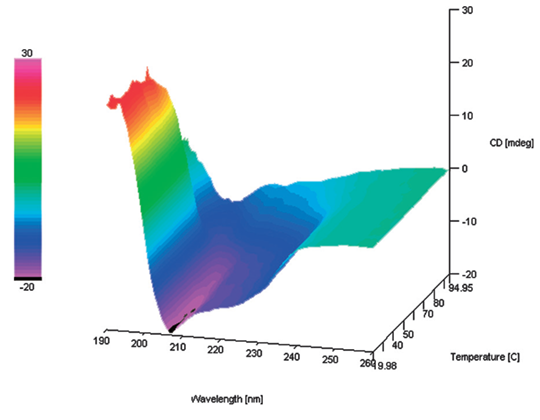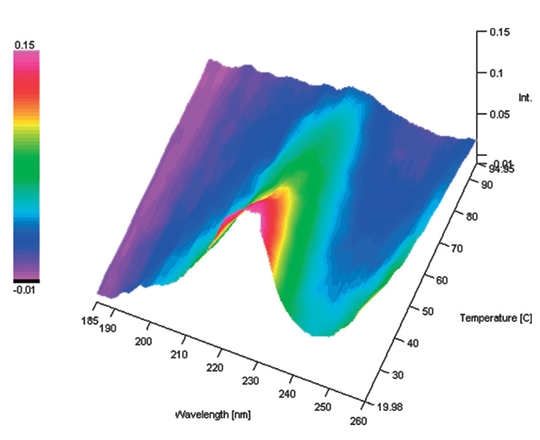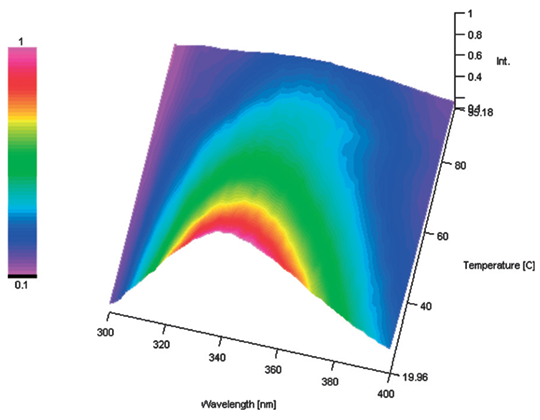Enhanced vacuum-UV measurement
The innovative optical system of the J-1500 permits the measurement of a CD spectrum in the vacuum-UV region down to 163 nm. The vacuum-UV region below 200 nm is of critical importance for biomolecules, particularly in protein secondary structure estimation.

α-Pinene enantiomers (gas phase) showing excellent performance in the Far-UV region.

The same α-Pinene samples showing similar superior performance in the vacuum-UV region down to 163 nm.

CD spectra of Human serum albumin (helix rich), concanavalin A (β-sheet rich) and trypsin inhibitor (random rich) in water with excellent signal to noise up to 174 nm.
Exceptional stray-light rejection
Stray light will result in distortion of the CD spectrum, particularly in the far-UV region where the sample absorbance is high. The dual prism polarizing optical design of the J-1000 series results in stray light lower than 0.0003%, enabling the instruments to obtain high-quality CD data even under conditions with high absorbance.

CD spectra under high absorbance conditions
Rapid scanning
High sensitivity combined with a 10000 nm/min. maximum scan speed allows the J-1500 to measure samples quickly, increasing productivity in your lab. An additional benefit is the minimal time exposure of biological samples to the high-energy UV light, minimizing the risk of sample degradation.
CD dynamic range and linearity
The PMT detectors used in the JASCO system are specially selected for the highest sensitivity and lowest birefringence. The result is superior linearity compared to other types of detectors.

CD spectra of l-10-ACS

CD linearity (sample: l-10-ACS)
Simultaneous multi-probe measurement
The latest quad-channel lock-in amplifier provides the simultaneous acquisition of up to four data channels including CD, absorbance, linear dichroism (LD), fluorescence, fluorescence-detected CD (FDCD), fluorescence-detected LD (FDLD) and fluorescence anisotropy.

CD

Absorbance

Ex. fluorescence

Em. fluorescence
Multi-probe measurement of Lysozyme showing the simultaneous acquisition of CD, Absorbance, Ex Fluorescence and Em Fluorescence during a thermal-ramping experiment.
